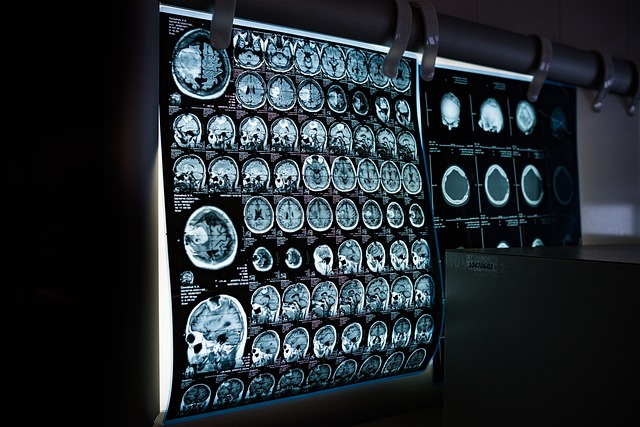Navigating the Labyrinth: Understanding Alzheimer's Disease
Alzheimer's disease, a progressive neurological disorder, has become one of the most pressing health concerns of our time. As populations age worldwide, the prevalence of this devastating condition continues to rise, affecting millions of individuals and their families. Named after Dr. Alois Alzheimer, who first described the condition in 1906, this form of dementia gradually erodes memory, cognitive function, and the ability to perform daily tasks. Despite decades of research, Alzheimer's remains a complex puzzle, challenging scientists and healthcare professionals alike. This article delves into the current understanding of Alzheimer's disease, exploring its causes, symptoms, diagnosis, and the ongoing quest for effective treatments and prevention strategies.

Recent research has shed light on additional factors contributing to Alzheimer’s pathology. Neuroinflammation, a chronic state of inflammation in the brain, is now recognized as a significant component of the disease. This persistent inflammatory response can damage healthy neurons and exacerbate the effects of plaques and tangles. Additionally, vascular health plays a crucial role, with studies showing that impaired blood flow to the brain can increase the risk of Alzheimer’s and accelerate its progression.
Early Signs and Diagnosis
Identifying Alzheimer’s disease in its early stages remains a significant challenge. The initial symptoms often mirror normal age-related changes or stress-induced forgetfulness. However, as the disease progresses, certain patterns emerge. Early signs may include difficulty remembering recent events or conversations, confusion about time or place, and struggles with problem-solving or planning. Changes in mood and personality, such as increased anxiety or withdrawal from social activities, can also be indicative of early Alzheimer’s.
Diagnosing Alzheimer’s typically involves a comprehensive approach. Neurological exams, cognitive tests, and brain imaging techniques like MRI and PET scans help physicians assess brain structure and function. In recent years, biomarker tests have gained prominence. These tests can detect specific proteins associated with Alzheimer’s in cerebrospinal fluid or blood, potentially allowing for earlier and more accurate diagnosis. However, a definitive diagnosis of Alzheimer’s disease can only be confirmed through post-mortem brain examination.
The Genetics of Alzheimer’s
While age remains the most significant risk factor for Alzheimer’s disease, genetics play a crucial role in determining susceptibility. Research has identified several genes associated with increased risk, most notably the APOE gene. Individuals carrying the APOE ε4 allele have a higher likelihood of developing Alzheimer’s, though it’s important to note that having this genetic variant doesn’t guarantee disease onset.
In rare cases, specific genetic mutations can cause early-onset familial Alzheimer’s disease, which typically manifests before age 65. Mutations in genes such as APP, PSEN1, and PSEN2 are known to cause this hereditary form of the disease. Understanding these genetic factors has opened new avenues for research, including the development of gene therapies and personalized treatment approaches based on an individual’s genetic profile.
Current Treatment Approaches
Despite extensive research, there is currently no cure for Alzheimer’s disease. However, several treatments aim to manage symptoms and slow disease progression. Cholinesterase inhibitors, such as donepezil and rivastigmine, work by increasing levels of acetylcholine, a neurotransmitter involved in memory and cognitive function. Another drug, memantine, regulates glutamate activity in the brain, potentially reducing cognitive decline in moderate to severe Alzheimer’s.
In 2021, the FDA granted accelerated approval to aducanumab, the first new Alzheimer’s drug in nearly two decades. This monoclonal antibody targets beta-amyloid plaques, aiming to clear them from the brain. However, its approval has been controversial, with debates ongoing about its efficacy and potential side effects. This underscores the challenges in developing effective treatments for such a complex neurological disorder.
Lifestyle and Prevention Strategies
While the search for a cure continues, growing evidence suggests that certain lifestyle factors may help reduce the risk of Alzheimer’s or slow its progression. Regular physical exercise has been shown to have neuroprotective effects, potentially reducing the risk of cognitive decline. A healthy diet, particularly one rich in omega-3 fatty acids, antioxidants, and low in saturated fats, may also play a role in brain health.
Cognitive engagement and social interaction are increasingly recognized as important factors in maintaining brain health. Activities that challenge the mind, such as learning a new language or playing a musical instrument, may help build cognitive reserve. This concept suggests that engaging in mentally stimulating activities throughout life can help the brain better cope with age-related changes and potential damage from Alzheimer’s pathology.
The Future of Alzheimer’s Research
The field of Alzheimer’s research is rapidly evolving, with several promising avenues under investigation. One area of focus is on developing more targeted therapies that address specific aspects of the disease process. For example, researchers are exploring ways to modulate the immune system to reduce neuroinflammation or developing drugs that can prevent the formation of tau tangles.
Advances in neuroimaging and biomarker research are paving the way for earlier and more accurate diagnosis. This could potentially allow for intervention before significant brain damage occurs. Additionally, the growing field of precision medicine holds promise for tailoring treatments to an individual’s genetic and biological profile.
As our understanding of Alzheimer’s disease continues to grow, so does hope for more effective treatments and prevention strategies. While the journey to unravel this complex disorder is far from over, each new discovery brings us closer to a world where Alzheimer’s no longer casts such a long shadow over aging populations. The combined efforts of researchers, clinicians, and patients participating in clinical trials are crucial in this ongoing quest to conquer one of the most challenging health issues of our time.





